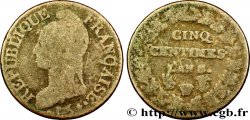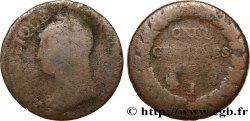fme_574634 - CONSULATE Médaille, Bataille de Marengo et du passage du Grand St-Bernard, refrappe
Not available.
Item sold on our e-shop (2021)
Price : 180.00 €
Item sold on our e-shop (2021)
Price : 180.00 €
Type : Médaille, Bataille de Marengo et du passage du Grand St-Bernard, refrappe
Date: 1799-1800
Mint name / Town : France
Metal : bronze
Diameter : 59,3 mm
Orientation dies : 12 h.
Engraver MONTAGNY ?
Weight : 98,97 g.
Edge : lisse + corne BRONZE
Puncheon : corne BRONZE
Coments on the condition:
Patine hétérogène. La médaille présente de petites marques d’usure sur les hauts reliefs
Obverse
Obverse legend : BONAPARTE PREMIER CONSUL DE LA REPUBLIQUE FRANSE // BATAILLE DE MARENGO / LE XXVI PRAIRIAL / AN VIII.
Obverse description : Tête à droite osée sur un cartouche orné de la Bataille de Marengo. Signé : MONTAGNY F..
Reverse
Reverse legend : PASSAGE DU GD ST BERNARD / LE XXV FLORAL / AN VIII.
Reverse description : Napoléon à cheval passant le col du Grand Saint-Bernard. Signé : MONTAGNY F. D’APRES ANDRIEU.
Commentary
Médaille frappée après 1880.
Bonaparte franchissant le Grand-Saint-Bernard est un portrait équestre du Premier Consul Napoléon Bonaparte peint par Jacques-Louis David entre 1800 et 1803. Napoléon est représenté lors du franchissement du col alpin du Grand-Saint-Bernard par l’armée de réserve, épisode qui marque le début de la seconde campagne d'Italie.
Fleury Montagny, né le 4 février 1760 à Saint-Étienne, mort à Marseille en 1836, est un graveur ciseleur sur armes et médailleur français.
Issu d'une famille de graveurs, il fut l'élève de son père Jean Montagny et était le frère de Clément Montagny le jeune (1756-1810), tous les deux graveurs. Il eut également comme professeurs ses oncles également graveurs Clément Montagny le vieux (1730- ) et Philibert Montagny (1732- )..
Bonaparte franchissant le Grand-Saint-Bernard est un portrait équestre du Premier Consul Napoléon Bonaparte peint par Jacques-Louis David entre 1800 et 1803. Napoléon est représenté lors du franchissement du col alpin du Grand-Saint-Bernard par l’armée de réserve, épisode qui marque le début de la seconde campagne d'Italie.
Fleury Montagny, né le 4 février 1760 à Saint-Étienne, mort à Marseille en 1836, est un graveur ciseleur sur armes et médailleur français.
Issu d'une famille de graveurs, il fut l'élève de son père Jean Montagny et était le frère de Clément Montagny le jeune (1756-1810), tous les deux graveurs. Il eut également comme professeurs ses oncles également graveurs Clément Montagny le vieux (1730- ) et Philibert Montagny (1732- )..








 Report a mistake
Report a mistake Print the page
Print the page Share my selection
Share my selection Ask a question
Ask a question Consign / sell
Consign / sell
 Full data
Full data



